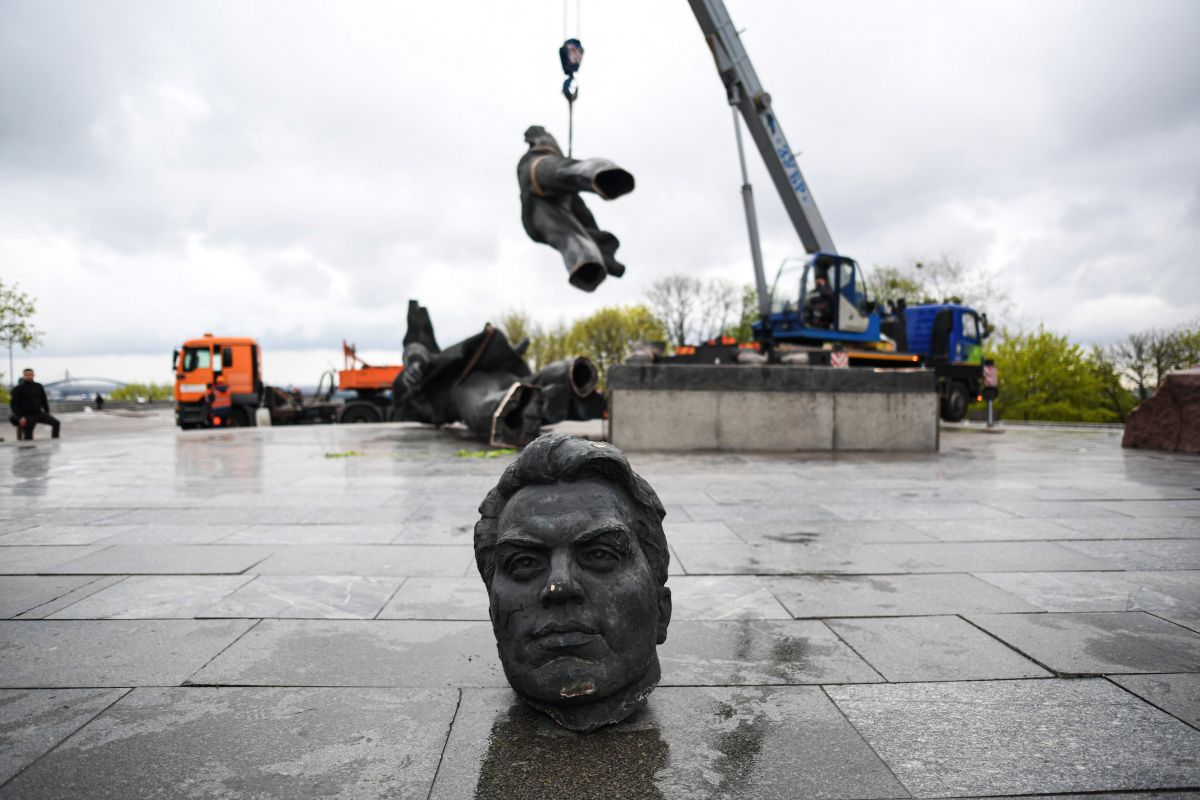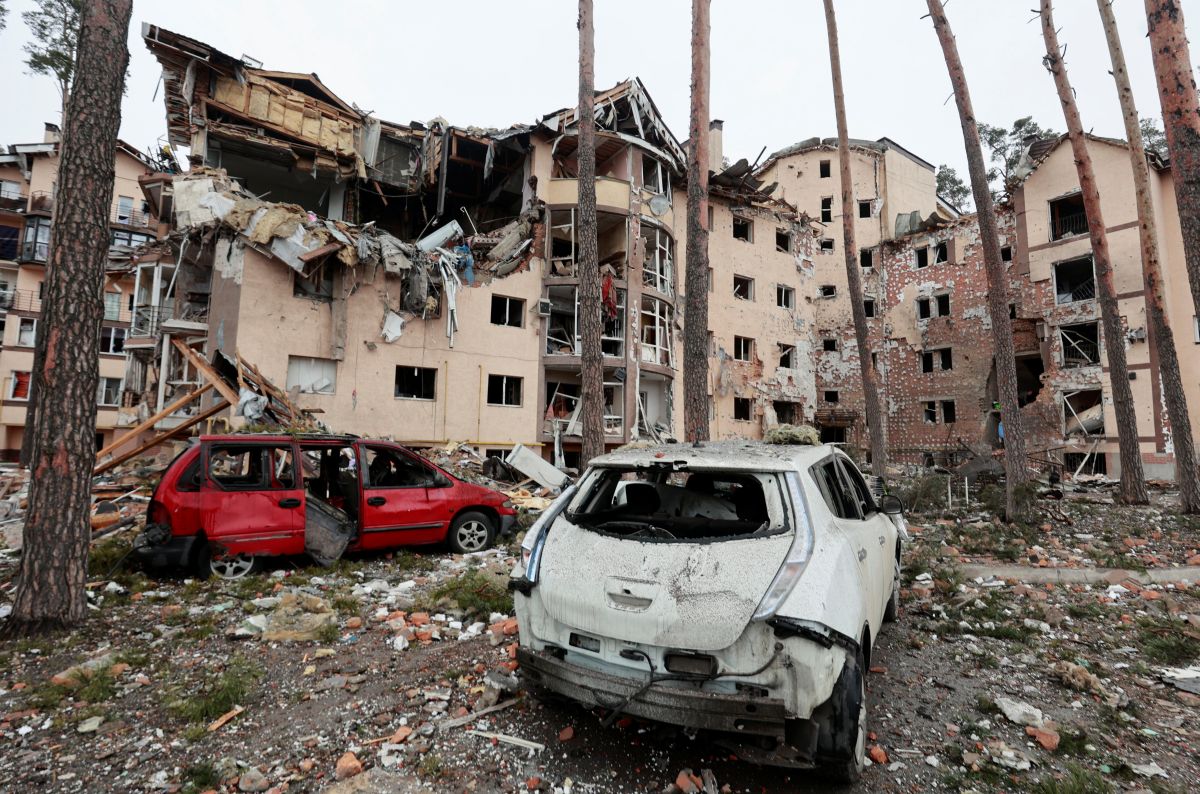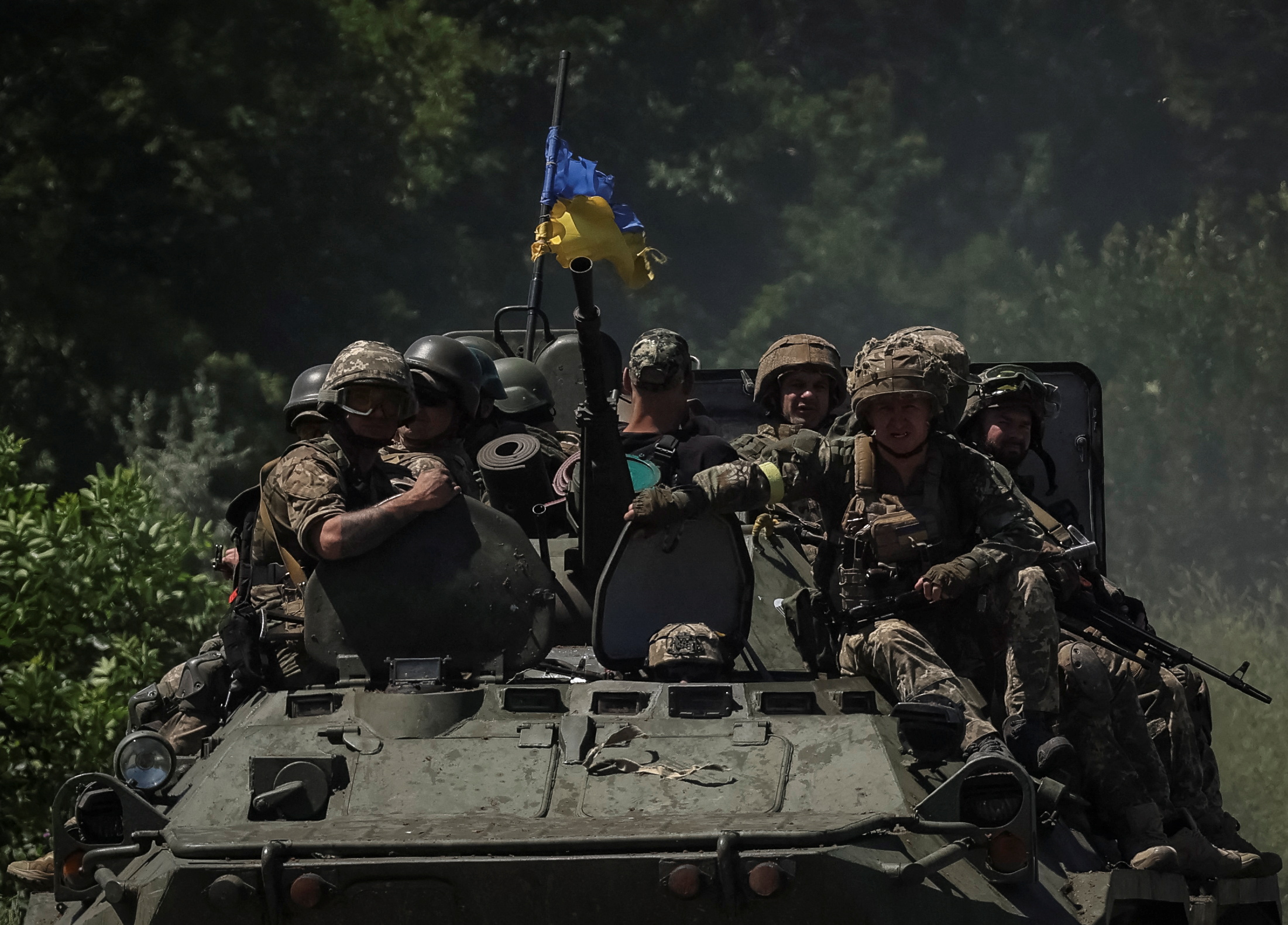Ukrainian Society in the Face of War
Social mobilisation in Ukraine in the face of the Russian aggression remains high. The majority of the population actively supports the actions of the Ukrainian armed forces and the authorities, and there are relatively few cases of collaboration with enemy forces in the occupied territories. However, the lack of prospects for a quick end to the war may weaking the determination to resist. That is why it is important to provide support directly to Ukrainian society, including humanitarian aid.
 Salvatore Cavalli/ Zuma Press/ FORUM
Salvatore Cavalli/ Zuma Press/ FORUM
Society and Military Actions
Since the beginning of the Russian invasion, most of the Ukrainian population has been involved in the defence of the country. Grassroots social support for the Armed Forces of Ukraine (AFU) has included financial aid and various types of volunteering (e.g., home production of camouflage nets or Molotov cocktails). Currently, support for the defence effort remains high, but is focused on fundraising for the army. At the same time, in the occupied territories there are few cases of collaboration with Russian forces and people remain indifferent to Russia’s passportisation campaigns (granting Russian citizenship on simplified terms), or tax or credit concessions in exchange for acceptance of the new administration. Cases of collaboration are publicly stigmatised and mainly involve activists of the outlawed pro-Russia party Opposition Platform–For Life.
One of the effects of the war is the militarisation of Ukrainian society. In the run-up to the invasion, Ukrainians were already buying up legal weapons available in the country. After the Russian incursion, the number of supporters of the right to bear arms and ammunition has more than doubled (58% supported such an initiative in May this year), which is motivated by the need to strengthen the country’s defence capabilities. Even more people (72%) support the idea of introducing compulsory shooting training for civilians. The government is working on a law regulating the ownership of weapons by citizens, which, in relation to the previous regulations, is to extend the list of authorised personal weapons.
At the beginning of the invasion, Ukrainians enlisted en masse in the Territorial Defence Forces and complementary volunteer formations, and a significant part of the population declared it would fight in defence of the state with weapons in hand. After months of fighting, this kind of enthusiasm is not as widespread. More and more men are looking for a way to go abroad or obtain documents exempting them from military service, although it is difficult to estimate the scale of it. In June, the State Border Guard Service of Ukraine reported that it had detained about 3,500 men of conscription age attempting to leave the country illegally.
Assessment of the Situation in the Eyes of Ukrainian Society
In response to the Russian aggression, Ukrainian society has united around the authorities. Ukrainians in surveys declare a high level of trust in President Volodymyr Zelensky. A large majority (around 85%-90%) approve of his actions, especially significant compared to January when only every third person supported him. The actions of the AFU are assessed even higher (at the level of 98%). These assessments practically have not changed during the five months of the war. Another element of trust in the authorities is the declared pride in Ukraine, the opinion that the situation in the country is going in the right direction, as well as the belief that Ukraine will win the war. At the same time, there is no social consensus on any concessions to Russia, including the handing over of part of Ukrainian territory to it, although people from areas directly affected by military operations are slightly more inclined to seek a settlement with Russia. As time passes, however, the optimism related to the possibility of a quick end to the war has diminished: Ukrainian society is becoming more and more aware that it will be a long-term fight.
The Russian attack has had a dramatic impact on Ukrainians' assessment of Russia and its people. Although attitudes towards their neighbour had gradually deteriorated in recent years, the resentment at that time was directed primarily towards the Russian government, while attitudes towards the Russian people mostly remained positive. Today, though, only 8% of Ukrainians declare sympathy for Russians, compared to 47% in 2018. Both the Russian government and Russians are blamed for the attack on Ukraine. The perception of history is also changing. The ideological turn to de-Russification and de-Sovietisation, initiated in 2014, is strengthening. Ukrainians believe that after regaining full control over the territory, relations with Russia should be severed and Russians forbidden to enter Ukraine (a visa regime has been in force since 1 July this year). The public also backs changing street names associated with Russia or the Soviet regime, dismantling Soviet monuments, and banning Russian music in media. The role of the Russian language in everyday communication is also diminishing, with 78% of Ukrainians declaring that they speak Ukrainian more than before.
The Russian aggression has also changed the attitude of Ukrainians towards the country’s western partners. Among the states most highly valued by the Ukrainian public and considered friendly are those that have taken in refugees and provide military and humanitarian aid, including Poland (first in the polls), followed by the U.S., the UK, and Lithuania. Poland is also indicated as the country that the public feels has helped Ukraine the most in the face of the attack. This has translated into the greatest change in sympathies. Even before the February aggression, around 60% of Ukrainians considered Poland to be a friendly country, and now it is 96%. Although countries such as France, Germany, and Hungary are seen as less favourable to Ukraine than the other states, they are still considered friendly (declared as such by more than or about half of Ukrainians, at 68%, 57%, and 46% respectively).
Refugee Movement
According to estimates by the United Nations High Commissioner for Refugees (UNHCR), more than 13 million Ukrainians, or about 30% of the pre-invasion population, had to leave their homes as a result of the Russian attack. Most of them (up to 8 million) are internally displaced persons (IDPs). More than 4.2 million are in the European Union and Moldova, with most of them in Poland (about 1.2 million), Germany (780,000), and Czechia (about 380,000). Of both the external and internal refugees, most are women and children. However, more returns to the country can be observed. This applies primarily to people from relatively safe areas who have not lost their homes in the fighting. According to estimates from the beginning of June this year, almost 3.5 million homes or flats have been destroyed or damaged as a result of the hostilities.
Since 24 February, some 1.2-1.5 million Ukrainians (Ukrainian government and UNHCR estimates) have been forcibly displaced or voluntarily have gone to Russia. These are mainly people from occupied territories who have been prevented by Russian forces from travelling toward Ukrainian-controlled areas, leaving only the possibility of heading to Russia or to the so-called people’s republics or occupied Crimea. Russia has employed “filtration” of these refugees, entailing a process where any connection to the Ukrainian armed forces or state administration is checked in detail. Only after verification they are not a risk are they allowed to travel to Russia or deported deep inside Russia, sometimes to remote regions far from Ukraine. People suspected of having links with the AFU are detained and often tortured. People who have lost Ukrainian identity documents as a result of the hostilities and forced to Russian territory are therefore unable to leave and are in a particularly difficult situation.
Conclusions and Recommendations
The high social mobilisation of Ukrainian society results from the ability of its citizens to self-organise. It is based on previous experiences, primarily the 2013/2014 Revolution of Dignity and the beginning of the Russian aggression when grassroots movements and NGOs had to replace non-functioning or poorly functioning state institutions in certain fields. The attitude of the population is now to some extent strengthened by the government’s coherent information strategy. The impact of the successful decentralisation reform, which made it easier and allowed for a more flexible response to the challenges of war (e.g., in terms of territorial defence or assistance to IDPs), is also not insignificant. However, the prolonged defence effort and increasing casualties will strain the effectiveness of Ukrainian social resistance to the Russian aggression.
The high trust in the Ukrainian authorities, social mobilisation, and belief in victory have translated into radicalised expectations of the outcome of the war. This makes it difficult for the Ukrainian authorities to make concessions to Russia, which may affect any negotiation process.
Maintaining the high morale of Ukrainian society will strengthen its resistance to the Russian aggression. Therefore, the EU and NATO should continue to support Ukraine, both economically and militarily, while pursuing an information policy aimed at its population. It is also particularly important to support Ukrainian society, also by helping NGOs.





